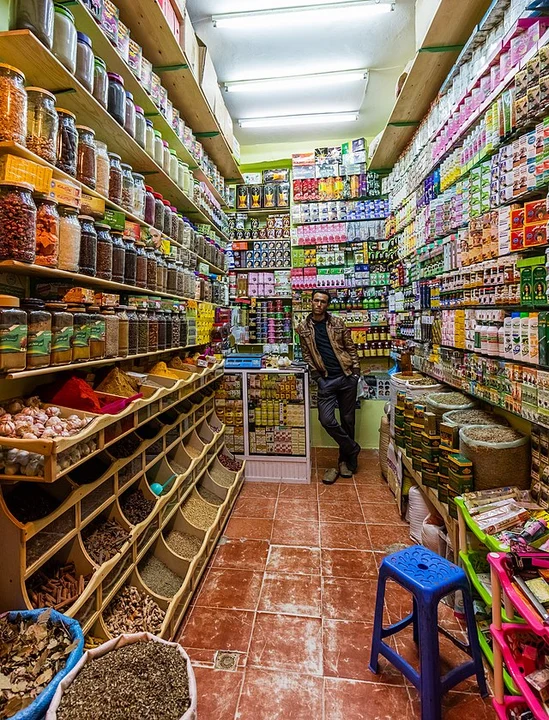May 23, 2023, Posted by: Ethan Newsman

Introduction: Unveiling the World of Grocery Store Sales
As a blogger who loves exploring the world of retail, I've always been curious about the daily sales of grocery stores. I mean, we all frequent grocery stores, don't we? So, it's only natural to wonder how much they make on an average day. In this article, I will delve into the fascinating world of grocery store sales and demystify the numbers for you. We'll explore the factors that contribute to their sales, the different types of grocery stores, and how they stack up against each other. So, let's get started!
The Factors Affecting Daily Sales
Before we jump into the numbers, it's important to understand the factors that can affect the average daily sales of a grocery store. Location, for instance, plays a significant role in determining the sales potential of a store. A store situated in a densely populated urban area is likely to have higher daily sales than one in a rural area with fewer potential customers.
Seasonality is another factor that can impact daily sales. For example, grocery stores usually experience a surge in sales during the holidays, while sales may drop during certain months when people tend to travel or spend less time at home.
The size of the store, its product offerings, and the level of competition in the area are also crucial factors that can influence the average daily sales of a grocery store. Bigger stores with a wider variety of products are more likely to generate higher sales, while stores in areas with intense competition may struggle to attract customers.
Breaking Down the Types of Grocery Stores
In order to understand the average daily sales of grocery stores, it's essential to know that not all grocery stores are the same. There are various types of grocery stores, each with its own sales potential and target market. Here's a quick breakdown of the most common types:
1. Supermarkets: These are large, self-service stores that offer a wide range of food and household products. They typically have higher daily sales due to their extensive product offerings and large customer base.
2. Convenience Stores: Smaller than supermarkets, convenience stores primarily cater to customers looking for a quick shopping experience. They usually have lower daily sales than supermarkets but may have higher sales per square foot.
3. Specialty Stores: These stores focus on a specific category of products, such as organic foods, ethnic foods, or gourmet items. Their sales potential largely depends on the demand for their niche offerings.
4. Discount Stores: Discount grocery stores offer a limited range of products at lower prices. Their daily sales may be lower than those of full-service supermarkets, but their profit margins can be higher due to lower operating costs.
Crunching the Numbers: Average Daily Sales
Now that we have a better understanding of the factors affecting daily sales and the different types of grocery stores, let's get to the numbers. According to industry data, the average daily sales for a supermarket in the United States is approximately $50,000. However, this figure can vary widely depending on the factors we discussed earlier, such as location, size, and competition.
Convenience stores typically have lower daily sales, averaging around $5,000 to $15,000. Specialty stores and discount stores can have daily sales that range anywhere from a few thousand dollars to tens of thousands, depending on their size, product offerings, and target market.
It's essential to note that these figures are merely averages and may not accurately represent the sales potential of every grocery store. A store's daily sales can be influenced by a multitude of factors, and the actual numbers can deviate significantly from these averages.
Comparing Grocery Store Sales: How Do They Stack Up?
Comparing the daily sales of different types of grocery stores can help provide a clearer picture of the industry landscape. As we mentioned earlier, supermarkets generally have the highest daily sales, primarily due to their large size, extensive product offerings, and broad customer base. Convenience stores, on the other hand, have lower daily sales but can have higher sales per square foot due to their smaller size and focus on quick, convenient shopping.
Specialty stores and discount stores can be more difficult to compare, as their sales potential largely depends on the demand for their niche offerings and their ability to attract customers. In some cases, a popular specialty store in a high-demand market may generate sales that rival those of a supermarket, while a discount store in a competitive area may struggle to keep up with its full-service counterparts.
Conclusion: The Complex World of Grocery Store Sales
In conclusion, the average daily sales of a grocery store can vary widely depending on factors such as location, size, type, and competition. While it's interesting to explore the numbers and compare different types of stores, it's important to remember that every store is unique, and its daily sales potential is influenced by a multitude of factors.
The world of grocery store sales is a complex and fascinating one, and I hope this article has shed some light on the subject for you. The next time you visit your local grocery store, take a moment to appreciate the intricate dance of supply, demand, and competition that contributes to its daily sales. And, of course, happy shopping!
Author
Ethan Newsman
I'm a news junkie living in New York City. I'm always on the lookout for the latest stories and I'm passionate about exploring the world of news. I'm always looking for new, unique ways to share news with the world!